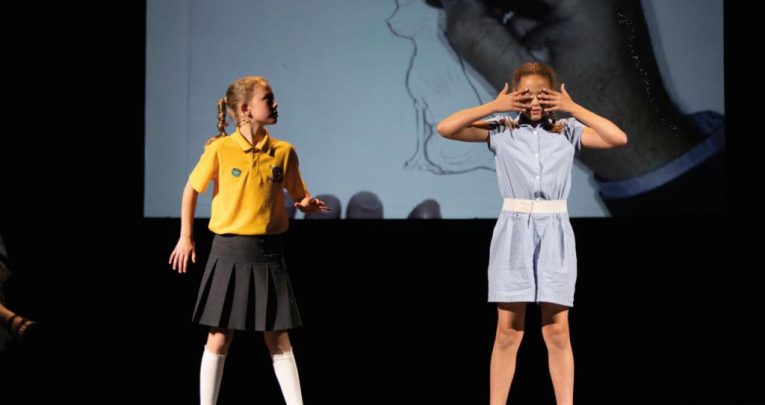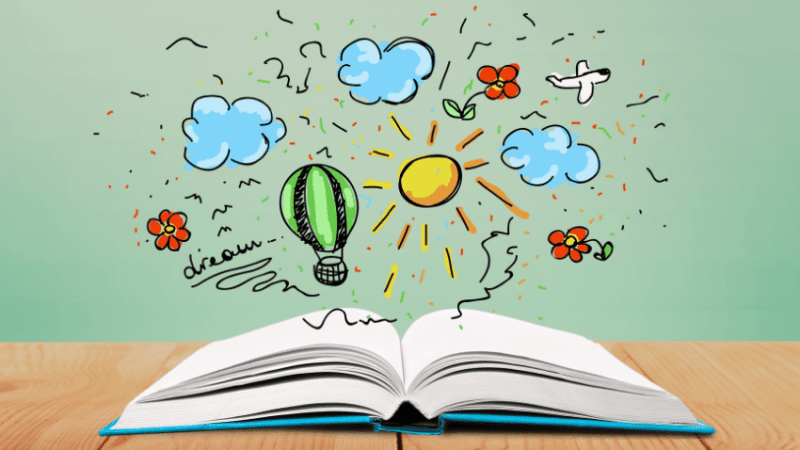How to lift poems off the page

Poetry should be celebrated in every classroom, says Charlotte Hacking – so here are some ideas to help you get started…

- by Charlotte Hacking
- Teacher, education consultant and children’s poetry editor

Poetry is one of the most important branches of literature, providing the gateway for so many young readers and writers in their journey towards becoming literate.
We are introduced to language and reading through the rhymes we hear and join in with as children – how well we travel along the road can be influenced by how exposed we are as we go to the joys and potential poetry offers to us as readers and writers.
There have, however, been tensions and issues around poetry’s place in the curriculum.
Ofsted’s commentary on its Phase 1 curriculum review in 2018 mentions the narrowing of the primary English curriculum and suggests that this is leading to less poetry being taught, especially at KS2.
CLPE’s Power of Poetry research project in 2017-18 found evidence to support this. As one teacher noted:
“Unfortunately, our most recent curriculum does not promote poetry and this, coupled with most primary teachers feeling less confident about teaching poetry, means there is little exposure to poets and their work for many of our children, particularly in KS2. Whilst our youngest children in the Early Years are exposed to nursery rhymes and opportunities to memorise and recite them frequently, as they get older, they meet such opportunities far less often.”
The wonderful thing about poetry is that it can be taught anywhere, at any time.
Alongside planned units around a particular collection or anthology, regular opportunities for a range of essential experiences to develop children’s knowledge of, engagement with and perceptions of poetry can be built in throughout the curriculum and school day, all year round.
Read aloud
The wonderful thing about poetry is that it can be dropped into any part of the school day.
Read a poem to start the day, before break, while lining up for lunch or at home time. Let it sit in the air without expecting a response, but allow children to talk about what they like and dislike and how it makes them feel if they want to share this.
It is important to introduce them to a wide range and breadth of poetry so that that they can be introduced to new poets, voices and styles they may not meet through their own reading; try not to be judgemental about what you think they will like or dislike, or might find too difficult.
Give time
Children need time to read, re-read and respond to poetry. However, we must make sure that we don’t jump into trying to dissect the poem before giving the children the opportunity to internalise and respond to it at a personal level.
A technique like ‘poetry papering’ works really well. Select a number of different poems, illustrating different poets, styles and forms, photocopy them, and pin them up around the classroom for pupils to find and explore at their leisure.
They can read, pass over, move on and then select one they’d like to talk about with someone else.
This encourages the children to enjoy the experience of simply reading a poem, to relish the uncertainties of meanings and the nature of the knowledge and emotional responses that poems invoke in them as readers.
Let them look for connections, ask questions, explore what they like about poems and the use of language.
Encourage performance
Children need to feel the joy in reading poetry aloud, joining in, dramatising and performing poems themselves. If poetry is not given a voice, if it just stays on the page as a printed object, then it is not going to come alive for most children.
Find opportunities for children to perform poetry themselves, to shadow an award, like the CLiPPA, enter recitation competitions or simply perform poems they love in school.
Make curriculum links
Word play is one of the most basic pleasures of poetry, giving the opportunity for playing games with language so that the shapes, sounds, and rhythms of words are enjoyed as well as their meaning.
Alliteration, assonance and nonsense words allow children to develop their knowledge of how letters and sounds are linked and explore spelling patterns on the page.
Poems that link to specific aspects of the curriculum can be a wonderful way into asking questions or sharing prior knowledge of a theme or topic and they can also be used at the end of a unit of study as a way of summarising learning.
For example, Rachel Rooney’s poem Six Facts About Light, could be used as a stimulus to write ‘Six Facts’ about a topic that has been covered.
Watch professionals
It’s so important for children to hear from, work with and watch professional poets – seeing a poet bring their own work to life and beginning to understand what that means in terms of the creation of poetry helps children to see themselves as writers.
CLPE’s free Poetryline website provides a range of poet performances and interviews for teachers to use in the classroom. A visit from a poet brings this experience directly to the children and can be hugely enriching and inspiring.
Embrace opportunities
Poetry gives you a voice to express what you want, in your own way. Children need the permission and opportunities to share and write about themselves, their feelings and important events.
Through writing poetry, children are encouraged to reflect on their experience, to recreate it, shape it, and make sense of it, giving it form and significance and communicating this to the reader or to the listener. Poetry is powerful. Use it all year round.
Access CLPE’s Poetryline website, which provides a wealth of opportunities for exploring poetry in schools, including videos of poets performing, free teaching plans for using high-quality poetry collections and further ideas for embedding poetry into the curriculum at: clpe.org.uk/poetryline. Browse more ideas and resources for teaching KS2 poems.










